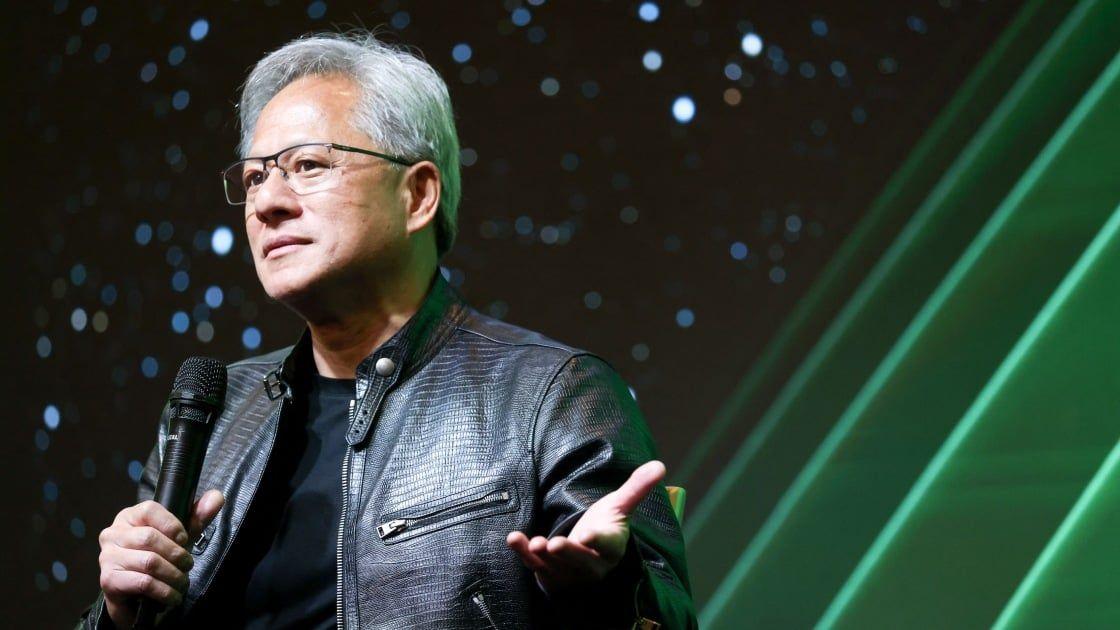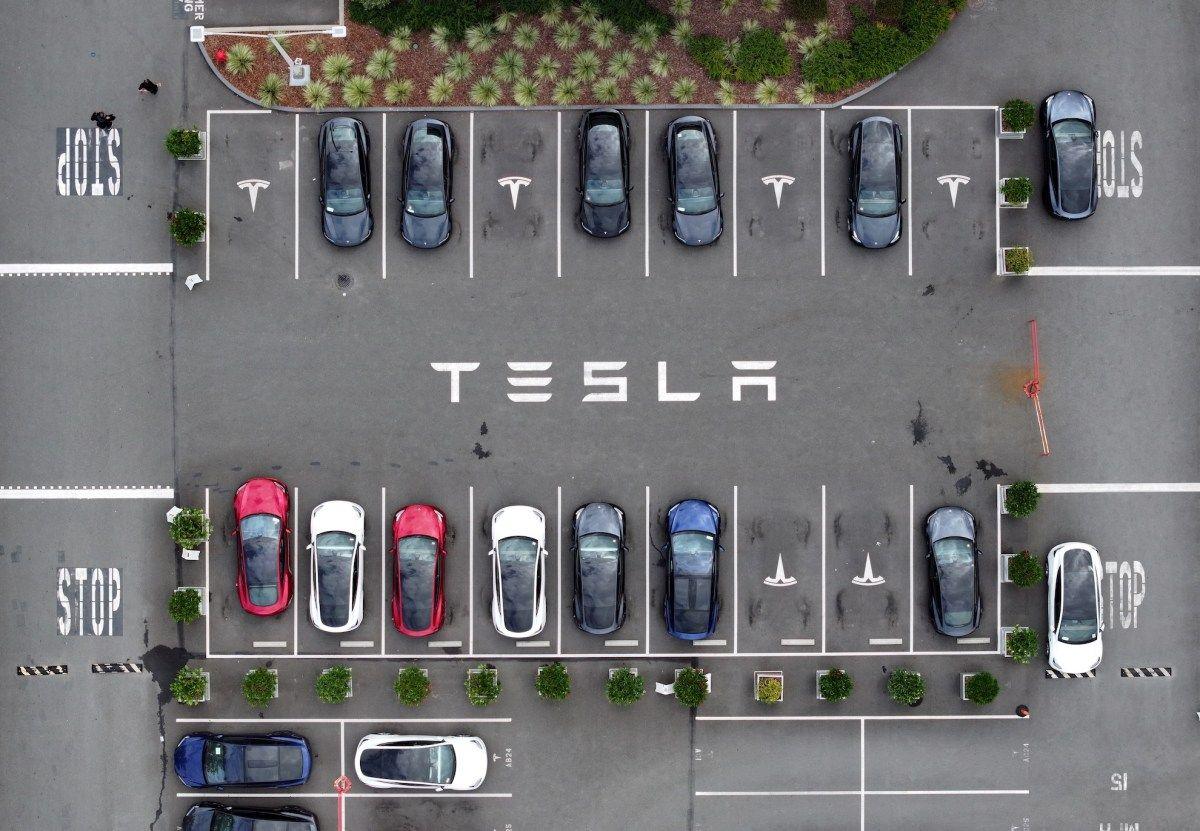NVIDIA CEO Jensen Huang Predicts 20% Performance Boost from GAA Technology, Emphasizes Architectural Innovations
2 Sources
2 Sources
[1]
Nvidia's Jesnen Huang expects GAA-based technologies to bring a 20% performance uplift
Is that enough for GPU production to jump to a cutting-edge node? Nvidia's Jensen Huang said during a Q&A session at GTC that next-generation process technologies relying on gate-all-around (GAA) transistors will likely bring about a 20% performance boost for the company's processors, reports EE Times. However, the most significant performance uplifts for Nvidia's GPUs are brought by the company's architectures, as well as software innovations. When asked about future generation Nvidia GPU architectures like Feynman, which is expected two generations from now (2028), Huang mentioned that if Nvidia transitions to a process technology that relies on GAA transistors, it should bring a 20% increase in performance. Our own Jarred Walton was at the Q&A, and says Huang seemed to downplay the importance of process node changes, emphasizing that the slowdown in Moore's Law means brand-new process technologies going forward are only likely to bring around a 20% improvement -- in density, power, and/or efficiency. It wasn't a definitive statement on what node Nvidia might intend to use, though the answer was in response to an analyst question looking for his comments about the potential for Nvidia to use Samsung Foundry in particular. Huang also noted that while improvements enabled by leading-edge process technologies are welcome, they're no longer transformative. "We'll take it," he said, but indicated other factors were more important. As AI systems scale, the efficiency of managing vast numbers of processors is becoming more important than the raw performance of each processor. Data centers are increasingly looking at performance per watt -- that "we're at the limit of physics." Unlike Apple, which is TSMC's alpha customer for all leading-edge nodes, Nvidia is not typically a company that adopts TSMC's latest process technologies first. Instead, it uses proven technologies. Nvidia has used tailored versions of TSMC's 4nm-class process technologies -- 4N and 4NP -- to produce its Ada Lovelace, Hopper, and Blackwell GPUs for client PCs and datacenters. TSMC's 4nm-class production nodes belong to the company's 5nm-class process development kit and are essentially refined versions of the foundry's 5nm technology. The company's next-generation GPUs for AI (codenamed Rubin, with custom Vera CPUs) are expected next year and are projected to use TSMC's 3nm-class fabrication process (presumably N3P, or a tailored version like "3NP"). To that end, it makes sense to expect Nvidia to adopt a GAA-based process technology for Feynman, which is expected in 2028. TSMC itself expects its first GAA-based process technology -- N2 -- to increase performance by 10% to 15% compared to N3E, the company's second generation 3nm-class process technology that precedes N3P. Given these metrics, it looks like Nvidia's Huang is a bit more optimistic about N2 than TSMC is. However, since Nvidia does not use first-generation process technologies (or at least has not used in years), we expect Feynman GPUs to adopt N2P, which enhances performance, reduces resistance and stabilizes power delivery, or even A16 that adds backside power delivery and promises an 8% to 10% performance uplift compared to N2. Both N2P and A16 are expected to ramp in 2027. If Nvidia adopts N2P or A16 for its 2028 products, then it's reasonable for the company to expect a 20% performance gain for its Feynman GPUs at N2P or A16 compared to Rubin GPUs at N3P. While Nvidia is one of the leading developers of processors these days, Jensen Huang emphasized multiple times that his company is not simply a semiconductor company anymore. Instead, he described the company as a provider of large-scale AI infrastructure. He also described it as a leader in algorithm development, especially for computer graphics, robotics, and fields like computational lithography. But while Nvidia has been gradually shifting from development of 'just' compute GPUs to AI servers and now server racks and clusters, Huang believes that Nvidia does not necessarily compete with its own customers. According to him, Nvidia does not build actual solutions for the end user, but rather supplies foundational technologies.
[2]
NVIDIA's CEO Claims GAA-Based Processes Will Bring In a 20% Performance Boost, But Key Focus Will Remain On Architectural Advancements
NVIDIA's CEO Jensen Huang is optimistic about the use of GAA-focused processes in the future, claiming that they could bring a massive boost to performance. We all know that Jensen isn't a firm believer in Moore's Law or lets it dictate the trend of performance brought in by newer architecture. NVIDIA's key focus, not just with AI but also other products, is to frame their lineups so that they defy the traditional performance scaling norms, and this is what the company has done over the course of many years, which we'll discuss ahead. This is why when Jensen was asked how he sees GAA (Gate-All-Around) technology (via EETimes), he claimed it would make a performance difference but wouldn't "change the world." NVIDIA's CEO claims that GAA transistors could bring in a 20% performance boost with a particular generation, although he didn't specify in what area we are looking to see changes, suggesting that the statement was vague. However, in the case of large-scale AI clusters, the key factor to consider is how individual components are being managed and connected with each other since, by focusing on this, NVIDIA has managed to achieve far more significance than what Moore's Law intends for. The chip industry has seen uncertainty around GAA adoption up until now, mainly since Samsung was the first company to announce a fully developed process based on the technology, the 3nm GAA. Despite the Korean giant's optimism towards their node, the company has failed to achieve industry-standard yield rates, and the last time, they were said to be at 20 percent, far lower than the required figure. As far as TSMC is concerned, the Taiwan giant is said to have introduced GAA with their N2 (2nm) lineup of processes. For NVIDIA, we are projecting it to utilize GAA technology with their recently-announced Feynman AI architecture, which is set to release in 2028 and will likely employ TSMC's N2 process. Team Green doesn't adopt the latest process in their product lineup; rather, it waits a few years, likely to get the node to become more mature in the market. However, for Team Green, the "Huang law" is what matters the most, which is to drive performance through architectural advancements, and this is how the company has scaled up chip efficiency by over 1,000x in a decade.
Share
Share
Copy Link
NVIDIA CEO Jensen Huang discusses the potential impact of Gate-All-Around (GAA) transistor technology on GPU performance, highlighting the company's focus on architectural and software innovations for AI infrastructure.

NVIDIA CEO Predicts Modest Gains from GAA Technology
NVIDIA CEO Jensen Huang has shared his thoughts on the future of semiconductor technology, particularly focusing on Gate-All-Around (GAA) transistors. During a Q&A session at the GPU Technology Conference (GTC), Huang suggested that GAA-based technologies could bring about a 20% performance boost for NVIDIA's processors
1
.Emphasis on Architectural and Software Innovations
While acknowledging the potential benefits of GAA technology, Huang emphasized that the most significant performance improvements for NVIDIA's GPUs come from architectural advancements and software innovations. He noted that as AI systems scale, the efficiency of managing vast numbers of processors is becoming more critical than the raw performance of individual processors
1
.NVIDIA's Approach to Process Node Adoption
Unlike some competitors, NVIDIA typically does not adopt the latest process technologies immediately. The company has been using tailored versions of TSMC's 4nm-class process technologies for its current generation of GPUs. Looking ahead, NVIDIA is expected to use TSMC's 3nm-class fabrication process for its next-generation AI GPUs, codenamed Rubin, in 2024
1
.Future GPU Architectures and GAA Implementation
Speculation surrounds NVIDIA's plans for implementing GAA technology in future GPU architectures. The Feynman architecture, expected in 2028, might be the first to utilize GAA-based processes, potentially adopting TSMC's N2P or A16 nodes. These advanced nodes are projected to offer significant performance improvements over current technologies
2
.Beyond Semiconductor Manufacturing
Huang stressed that NVIDIA has evolved beyond being simply a semiconductor company. He described NVIDIA as a provider of large-scale AI infrastructure and a leader in algorithm development for various fields, including computer graphics, robotics, and computational lithography
1
.Related Stories
Industry Perspective on GAA Technology
The chip industry has shown some uncertainty regarding GAA adoption. Samsung, the first to announce a fully developed 3nm GAA process, has faced challenges in achieving industry-standard yield rates. TSMC is expected to introduce GAA with its N2 (2nm) lineup of processes
2
.NVIDIA's Performance Scaling Strategy
NVIDIA's approach to performance scaling, dubbed "Huang's Law" by some, focuses on driving performance through architectural advancements rather than relying solely on process node improvements. This strategy has allowed the company to scale up chip efficiency by over 1,000x in a decade
2
.Implications for the AI and GPU Markets
As NVIDIA continues to push the boundaries of GPU and AI technology, the company's stance on process node advancements and its focus on architectural innovations could have significant implications for the broader AI and high-performance computing markets. The balance between leveraging new manufacturing technologies and optimizing existing architectures will likely remain a key factor in NVIDIA's strategy moving forward.
References
Summarized by
Navi
[1]
Related Stories
Recent Highlights
1
OpenAI releases GPT-5.2 AI model after code red memo targets Google's Gemini 3 threat
Technology

2
Disney invests $1 billion in OpenAI, licenses 200+ characters for Sora video generator
Technology

3
Disney accuses Google of massive copyright infringement through AI-generated character images
Policy and Regulation








